Calcined Diatomaceous Earth (DE) for Gritty Mix - Evaluations
lunarsolarpower
9 years ago
last modified: 9 years ago
Featured Answer
Sort by:Oldest
Comments (20)
lunarsolarpower
9 years agolast modified: 9 years agodrew51 SE MI Z5b/6a
9 years agoRelated Discussions
diatomaceous earth
Comments (32)"how is it then, that the food grade DE is safe, and not a danger to lungs ?" Because garden grade DE is mostly just silica, not crystalline silica ~ pool grade DE is mostly crystalline silica, not plain silica. Just like I said above, just plain silica is usually harmless, but crystalline silica isn't. Crystalline silica can cause silicosis (scarring of the lungs) and cancer. The pool grade De being in crystalline form allows it to "hang on" inside your lungs and cause scarring instead of being flushed out like normal dust. Garden grade DE is easier for the cilia in your lungs (little hairs lining your lung passages that "flush" out particles) to push along with mucus and expel. But, like Rhizo said, I still wouldn't say the garden grade is really "safe" to breathe in. If you have asthma, I can easily see doing so causing an asthma attack. And even if you don't have any lung problems, breathing in any kind of dust isn't exactly good for you. But the chance of it causing silicosis or cancer is significantly less, as in very-tiny-little-bitty chance....See MoreGritty mix alternative ideas
Comments (6)"Vermiculite, perlite, and also potentially cat litter could all be used in place of napa oil dry/turface." Vermiculite is too fine and spongy. It would just clog the pores paces you're working to create. Perlite would actually be a better replacement for granite, holding a bit more water than granite, but much less than Turface/Floor Dry. Cat litter can be a decent replacement for Turface/Floor Dry, but you need to be very careful when choosing one. Most will disintegrate when wet. Better to stick with a proven product if at all possible. "Granite is just used (presumably) for filler, as it serves no other purpose nutritionally." It doesn't serve any nutritional purpose, but it is necessary to balance the water retention. By varying the ratio of granite to Turface/Floor Dry, you can increase or decrease the water retention to match your needs. It's very important in that respect. "Bark is optional, but couldn't mulch work as well?" Some mulches are composed of bark, but any mulch including sapwood is not appropriate. The sapwood will break down much more quickly than bark, clogging pore spaces and tying up nitrogen in the process. Now that I've nixed all those ideas :), there are substitutions that can be made. Turface can be replaced with Napa Floor Dry, Oil Dri (hit or miss, must be tested for durability), or Schultz Aquatic plant soil or clay soil conditioner (both are rebranded Turface products sold at a higher price). Granite can probably be replaced with appropriately sized perlite, pumice, or lava rock. I tested these products for water retention, and while they do hold significantly more water than granite, they should still be closer to granite than Turface. Some people claim that pumice holds far more water than perlite, but in my test they were quite similar. Perhaps there are different grades of pumice? You would have to increase the ratio of these products to Turface in order to compensate for their increased water retention, but they should work fine. I use a perlite, bark, Turface mix on some Hoyas with great results. Pumice and lava rock may be difficult to find in a small enough size, so that needs to be considered. I don't have any substitutes for bark, but it can be obtained from several different sources. Most people look for bark based mulches from landscaping/big box stores. Other sources are orchid bark and Zoo Med's ReptiBark from pet stores, but these will usually be more expensive. Bark is not an essential ingredient, so you could just eliminate it as well. I would not add peat, topsoil, compost, or any fine component to a gritty mix, because it is unnecessary, and it eliminates the pore spaces we are working to create. I think that's about it for my suggestions. Hope it helps. -Chris...See MoreDiatomaceous Earth vs. Fired Clay in Gritty Mix
Comments (37)Holy cow, Al! It seems you very quickly become defensive of grit, even when it isn't under fire. You aren't being fair, or helpful, and you've accused me of making statements I never made. I said, "the moral of the story is: know your medium." I don't know how you interpreted that, or anything else I said, as blaming the medium, but now I see how grit has become a point of contention on the forum. "I'm one of the first to acknowledge or point out any limitations inherent in either the 5:1:1 mix or the gritty mix." I don't recall these discussions. In your opinion/experience, what are those limitations? "In this case, you're using a soil 'sort of' like the gritty mix, but not the gritty mix." I thought I was using a medium almost exactly like your 1:1:1. If I thought it was significantly different, I wouldn't have used it. I have depended on your advice throughout this process. Perhaps you don't remember me consulting you before I mixed it. You told me the bark wasn't important, and was really just there for those who weren't comfortable without an organic fraction. You also said DE was a perfectly acceptable substitute for Turface, and it was on your advice that I made my mix 2 parts granite to 1 part DE instead of the 1:1 ratio I'd have thought. You didn't warn me that it wouldn't perform the same (and I don't think we know that, still). I'm not blaming you, but I also don't think it's fair of you to blame me. This was a joint effort - done with your advice, knowledge, and blessing. "You have plants that were repotted in the fall and then lifted from the soil so you could inspect the roots - and were subjected to either over or under-watering - we don't know which." You can't blame pulling the plants since that wasn't done until just a few days ago, when it was obvious that something was very wrong. and we'd been unable to figure it out. My only recourse was to pull the plants and check the roots because they were ALREADY dying. Not being able to readily tell whether a plant is over- or under-watered is a frustrating drawback of grit. I also followed your advice on how and when to water. I took every piece of advice you gave me. One of the purported advantages of grit is that it's almost impossible to over-water, so do you really think that watering succulents in grit once a week was too much, especially since some of the affected plants are winter-growers, and they were in direct sunlight and reasonably warm? We don't know that they weren't overwatered, but it seems unlikely. "There is no way I would have suggested that you start repotting plants in the middle of winter." C'mon, Al. October 15 is mid-autumn, not the middle of winter, and for a summer-dormant species like the Aeonium and jades, hardly an inappropriate time to pot, especially since I bought the Aeonium already uprooted. Please don't exaggerate to make me look foolish. "Additionally, you have no experience growing in a medium like the gritty mix, so to assume the shortcomings associated with your efforts are the soil's fault isn't logical. If many are able to grow plants that exhibit excellent vitality in the gritty mix or by just efficiently implementing the concept behind the soils, how can any one grower blame the soil or the concept? ...the grower's obligation doesn't stop at providing a good medium. Who blamed the soil or the concept? I didn't. Whose post are you reading? And I haven't ASSUMED anything. I base all my hypotheses on evidence. My approach is ANYTHING BUT illogical. Go back and read all my posts on the subject of grit, and find me a single example in which I'm illogical. I resent that remark. It's entirely off-base. I simply pointed out a difference between grit and other media I've used: the top of grit dries very fast. Do you deny that? You can't easily tell if the plants are getting too much or not enough water. Do you deny that? "There is no practical way to put the roots of the Aeonium and those of the other plant at the same depth. I refer you to my "how do these roots look to you" post in the cacti forum .... It was those plants I was thinking about when I offered that suggestion." What suggestion? I'm not sure what you're referring to here. "...there IS a way to do it, it just requires a little patience. If you really wanted to pot the shortest AND tallest plants together...you might've planned ahead instead of just doing it...and it would've been no problem to do it in the summer...all you would need to do is lop off the bottom of the tall plants and start the tops as cuttings; or, lop off the top of the tall plants and discard them - then plant the roots at the same depth as the shorter plants." I said practical way to do it. I don't consider chopping a lovely plant in half to be very practical. I like my Aeonium at its current height. I don't want to cut it in half, at least not now or then, especially since when I potted it, I had just rescued it from poor conditions at the nursery. It was on its side, uprooted, and had to be potted - which is why it was put in grit in October (actually more likely August or early September) - it couldn't wait. You, yourself told me that I'd made the right choice in not cutting it back until it had recovered. Furthermore, since Aeonium's are summer-dormant, fall would seem a fine time to transplant them. In fact, the Aeonium was growing VERY WELL this winter after I planted it, so the re-potting isn't to blame. The problem didn't arise until I discovered the smaller plants were apparently water-stressed, and I tried to surface water just for them. That IS something one can do in most soils. It doesn't work well in grit. Get as defensive as you please; accuse me of "blaming" the medium if you like, but the truth remains the same: water doesn't stay on the surface of grit like it does in more absorbent media. That isn't criticism or blame. It's an observable difference between two types of media. "Blaming the soil is like blaming a bicycle you don't know how to ride or a math problem you don't know how to solve." Again, I didn't blame anything. I simply sought help and advice for a problem I had with my plants growing in grit because grit is different from what I'm used to. I didn't expect to be hauled over the coals for seeking help....See MoreGood container mix for multiple plants
Comments (2)511 works, but you'll get more time in grit. If weight is a concern, could incorporate pumice, but keep in mind that pumice can be rather alkaline, and really unstable, soft. Bonsai Jack sells hard stable pumice, though typically a bit high in pH. Hess is in the western U.S., and theirs is hard, pure, and nearly neutral pH. For increased water availability, could use some calcined DE. I've seen the NAPA product turn to mush, though. I've been using Axis regular, but the waste factor is just over 50%. Calcined DE evaluation/discussion: http://forums2.gardenweb.com/discussions/3012651/calcined-diatomaceous-earth-de-for-gritty-mix-evaluations?n=20 I find runoff water from calcined clay, which came out of the tap at 8.0-8.3, can be 4.0-4.5. Calcined DE runs 5.2-5.5. Pumice tends to be more alkaline, as high as 8.5 or more. I have plants in gritty that combines Turface and pumice, and after several months, the runoff pH is pretty balanced - what comes out is pretty much the pH that goes in. HTH....See Morelunarsolarpower
9 years agolast modified: 9 years agolunarsolarpower
9 years agolast modified: 9 years agoandy_e
9 years agolunarsolarpower
9 years agolast modified: 9 years agoNil13 usda:10a sunset:21 LA,CA (Mount Wash.)
9 years agolast modified: 9 years agolunarsolarpower
9 years agolast modified: 9 years agoNil13 usda:10a sunset:21 LA,CA (Mount Wash.)
9 years agolast modified: 9 years agolunarsolarpower thanked Nil13 usda:10a sunset:21 LA,CA (Mount Wash.)lunarsolarpower
9 years agolast modified: 9 years agolunarsolarpower
9 years agolunarsolarpower
9 years agolast modified: 9 years agopenfold2
9 years agoNil13 usda:10a sunset:21 LA,CA (Mount Wash.)
9 years agopenfold2
9 years agolunarsolarpower
9 years agolunarsolarpower
9 years agolast modified: 9 years ago
Related Stories

GARDENING GUIDESHow to Switch to an Organic Landscape Plan
Ditch the chemicals for a naturally beautiful lawn and garden, using living fertilizers and other nontoxic treatments
Full Story


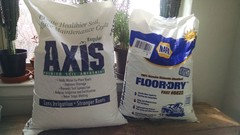
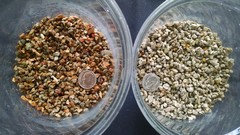

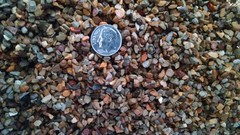
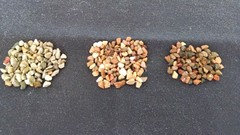
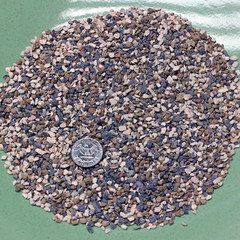
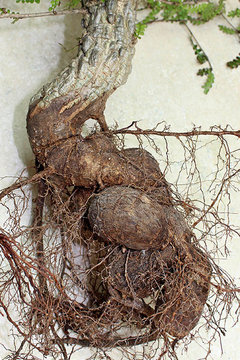


Nil13 usda:10a sunset:21 LA,CA (Mount Wash.)